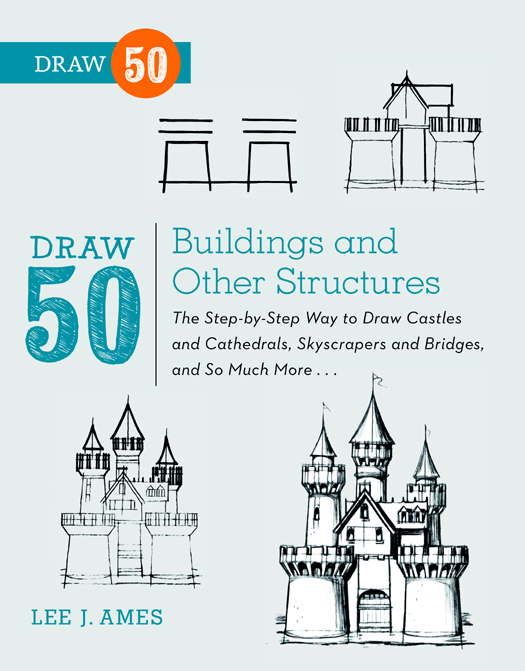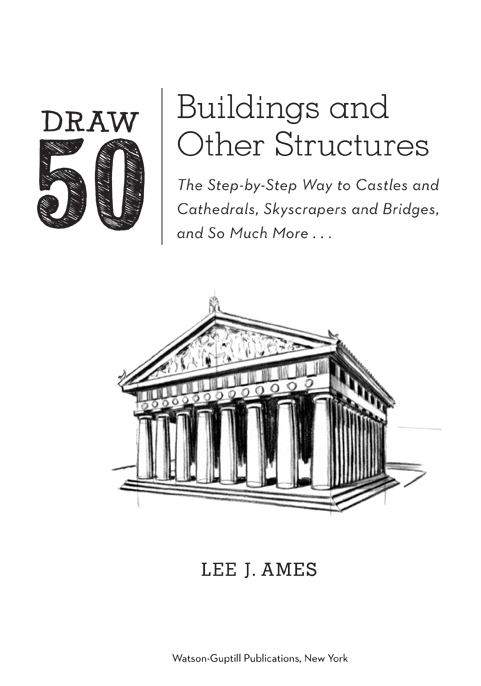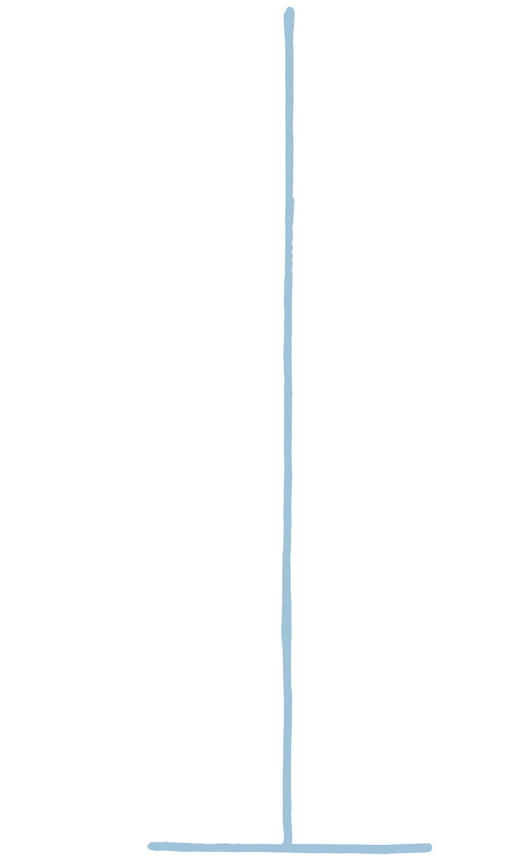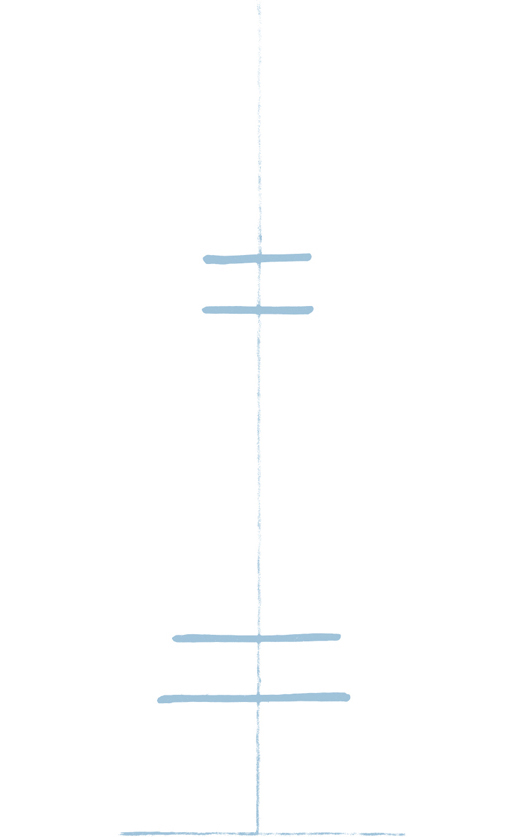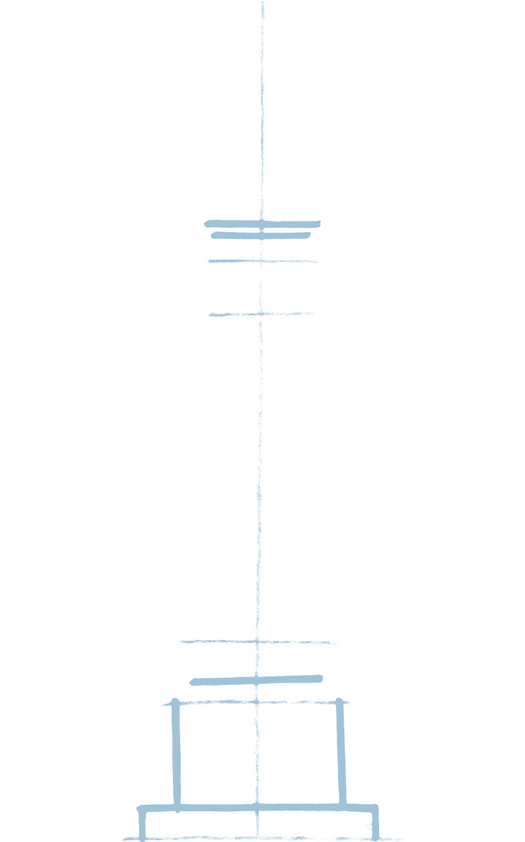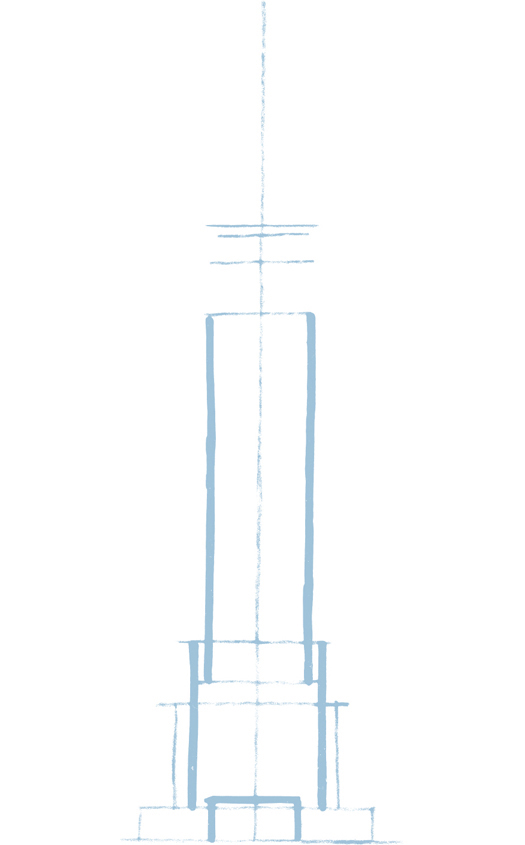BOOKS IN THIS SERIES
Draw 50 Airplanes, Aircraft, and Spacecraft
Draw 50 Aliens
Draw 50 Animal Toons
Draw 50 Animals
Draw 50 Athletes
Draw 50 Baby Animals
Draw 50 Beasties
Draw 50 Birds
Draw 50 Boats, Ships, Trucks, and Trains
Draw 50 Buildings and Other Structures
Draw 50 Cars, Trucks, and Motorcycles
Draw 50 Cats
Draw 50 Creepy Crawlies
Draw 50 Dinosaurs and Other Prehistoric Animals
Draw 50 Dogs
Draw 50 Endangered Animals
Draw 50 Famous Cartoons
Draw 50 Flowers, Trees, and Other Plants
Draw 50 Horses
Draw 50 Magical Creatures
Draw 50 Monsters
Draw 50 People
Draw 50 Princesses
Draw 50 Sharks, Whales, and Other Sea Creatures
Draw 50 Vehicles
Draw the Draw 50 Way
Copyright 1980 by Jocelyn S. Ames and Murray D. Zak
All rights reserved.
Published in the United States by Watson-Guptill Publications, an imprint of the Crown Publishing Group, a division of Random House, Inc., New York, in 2013.
www.crownpublishing.com
www.watsonguptill.com
WATSON-GUPTILL and the WG and Horse designs are registered trademarks of Random House, Inc.
Originally published in hardcover in the United States by Doubleday, a division of Random House Inc., New York, in 1980.
Library of Congress Cataloging-in-Publication Data
Ames, Lee J.
Draw 50 buildings and other structures.
1. Buildings in art. 2. DrawingTechnique.
I. Title.
NC825.B8A44 743 .84
Library of Congress Catalog Card Number 79-7483
eISBN: 978-0-8230-8605-4
v3.1
To Alfie
Many thanks to Holly Moylan for all her help.
Contents
To the Reader
This book will show you a way to draw buildings, bridges and other structures. You need not start with the first illustration. Choose whichever you wish. When you have decided, follow the step-by-step method shown. Very lightly and carefully sketch out the step number one. However, this step, which seems the easiest, should be done most carefully. Step number two is added right to step number one, also lightly and also very carefully. Step number three is sketched right on top of numbers one and two. Continue this way to the last step.
It may seem strange to ask you to be extra careful when you are drawing what seem to be the easiest first steps, but this is most important, for a careless mistake at the beginning may spoil the whole picture at the end. As you sketch out each step, watch the spaces between the lines, as well as the lines, and see that they are the same. After each step, you may want to lighten your work by pressing it with a kneaded eraser (available at art supply stores).
When you have finished, you may want to reinforce the final step in India ink with a fine brush or pen. When the ink is dry, use the kneaded eraser to clean off the pencil lines. The eraser will not affect the India ink.
Here are some suggestions: In the first few steps, even when all seems quite correct, you might do well to hold your work up to a mirror. Sometimes the mirror shows that youve twisted the drawing off to one side without being aware of it. At first you may find it difficult to draw the egg shapes, or ball shapes, or sausage shapes, or just to make the pencil go where you wish. Dont be discouraged. The more you practice, the more you will develop control.
In drawing these buildings I used much reference material to insure reasonable accuracy. Ive also tried, in some of the drawings, to convey a sense of perspective, rather than full constructions with vanishing points and projections. These can come later.
The only equipment youll need will be a medium or soft pencil, paper, the kneaded eraser and, if you wish, a ruler, a pen or brush and India inkor a felt-tipped penfor the final step. The first steps in this book are shown darker than necessary so that they can be clearly seen. (Keep your work very light.)
Remember there are many other ways and methods to make drawings. This book shows just one method. Why dont you seek out other ways from teachers, from libraries and, most important from inside yourself?
L EE J. A MES
To the Parent or Teacher
David can draw a building better than anybody else! Such peer acclaim and encouragement generate incentive. Contemporary methods of art instruction (freedom of expression, experimentation, self-evaluation of competence and growth) provide a vigorous, fresh-air approach for which we must all be grateful.
New ideas need not, however, totally exclude the old. One such is the follow me, step-by-step approach. In my young learning days this method was so common, and frequently so exclusive, that the student became nothing more than a pantographic extension of the teacher. In those days it was excessively overworked.
This does not mean, however, that the young hand is never to be guided. Rather, specific guiding is fundamental. Step-by-step guiding that produces satisfactory results is valuable even when the means of accomplishment are not fully understood by the student.
The novice with a musical instrument is frequently taught to play simple melodies as quickly as possible, well before he learns the most elemental scratchings at the surface of music theory. The resultant self-satisfaction, pride in accomplishment, can be a significant means of providing motivation. And all from mimicking an instructors Do as I do.
Mimicry is prerequisite for developing creativity. We learn the use of our tools by mimicry. Then we can use those tools for creativity. To this end I would offer the budding artist the opportunity to memorize or mimic (rote-like, if you wish) the making of pictures. Pictures he has been anxious to be able to draw.
The use of this book should be available to anyone who wants to try another way of flapping his wings. Perhaps he will then get off the ground when his friend says, David can draw a building better than anybody else!
L EE . J. A MES

Empire State Building (New York, U.S.A.)


